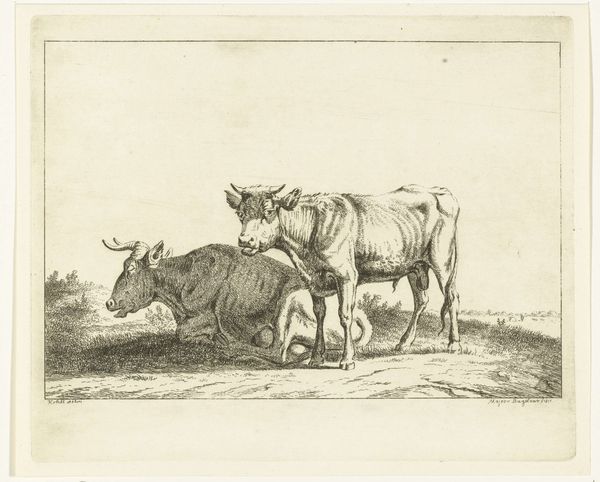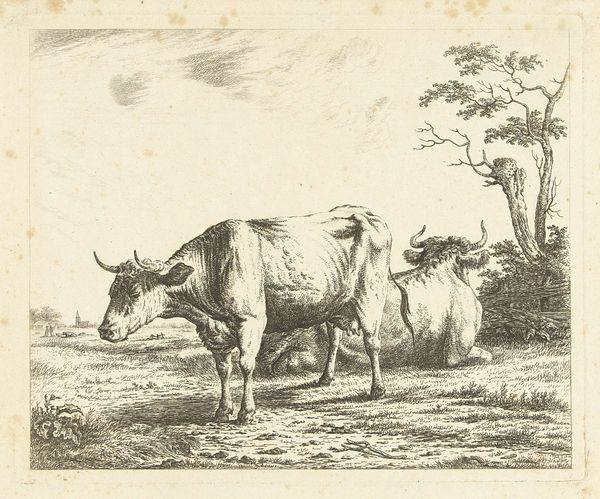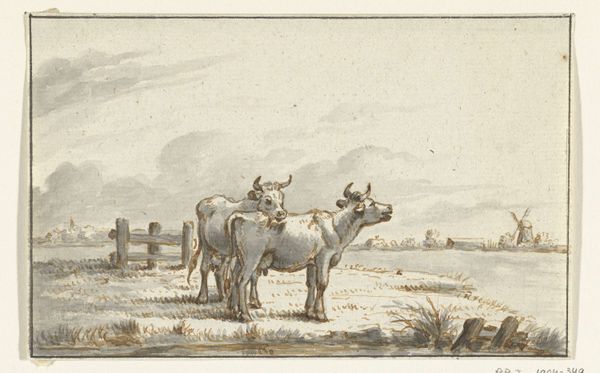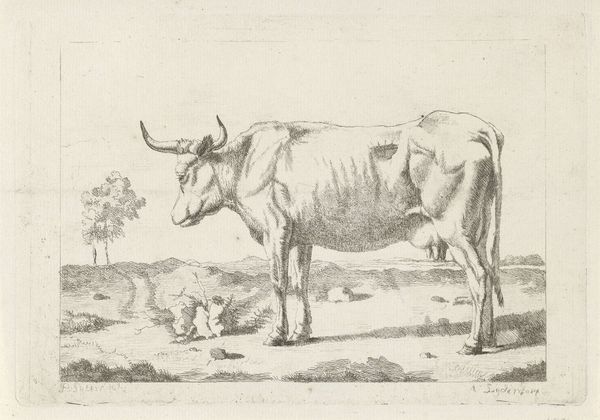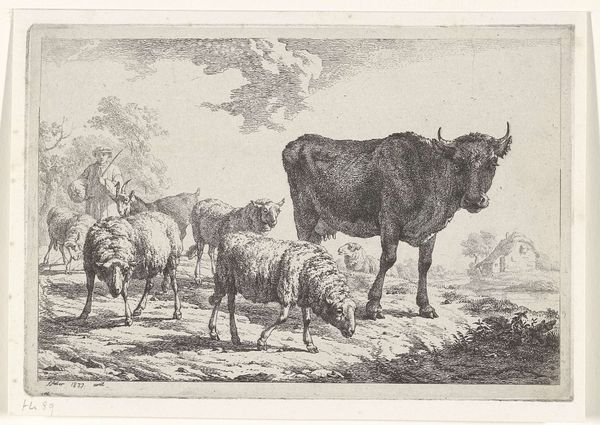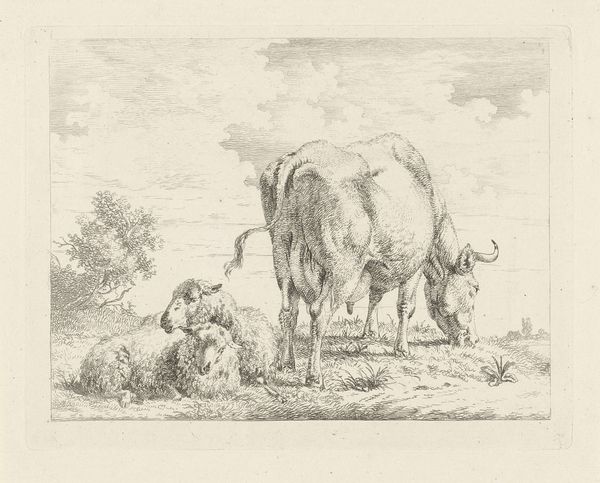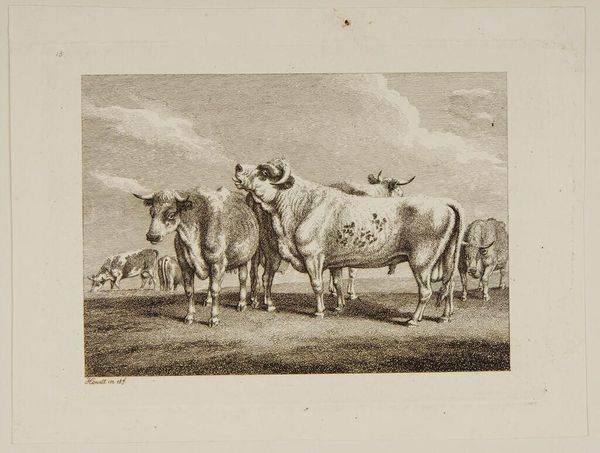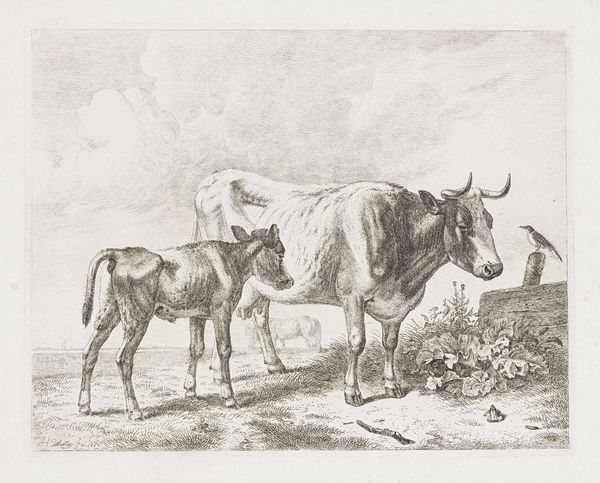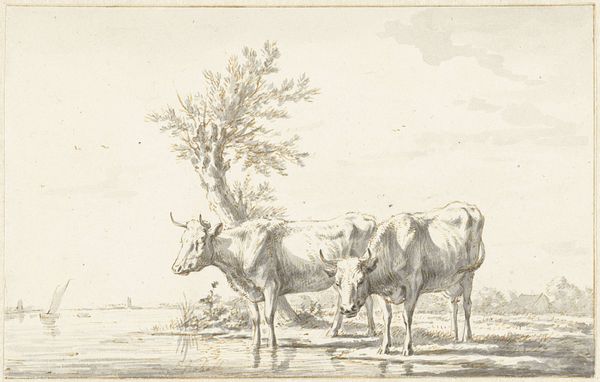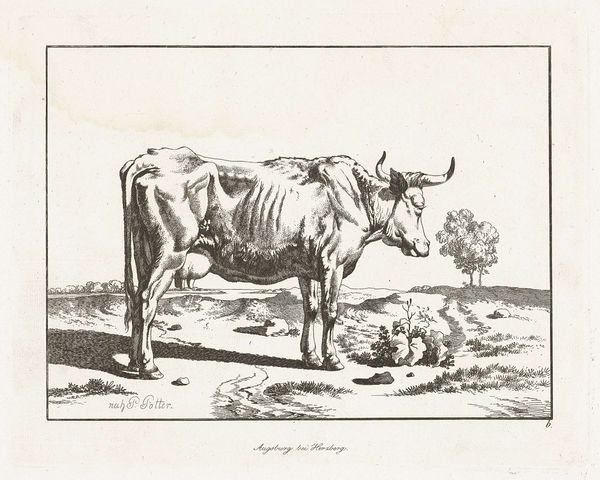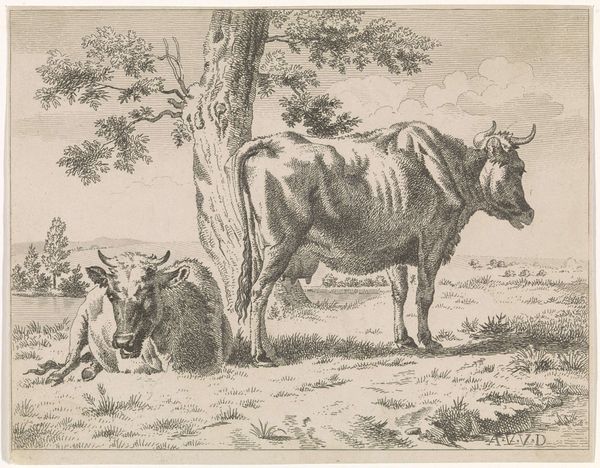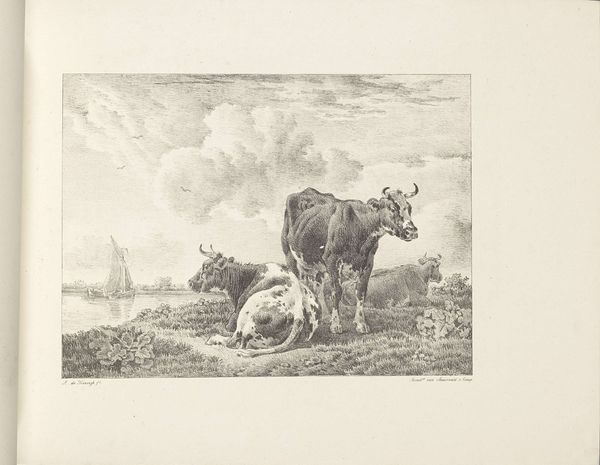
print, engraving
# print
#
landscape
#
genre-painting
#
engraving
#
realism
Dimensions: height 168 mm, width 205 mm
Copyright: Rijks Museum: Open Domain
Curator: This is "A Cow and a Calf in a Meadow," an engraving dating back to 1817 by Ernst Willem Jan Bagelaar. What’s your first impression? Editor: Muted. Peaceful, almost melancholic. There's a stillness to it, a quietude that’s really appealing. It feels like a snapshot of simple, rural existence, far removed from… well, everything modern. Curator: Exactly! The print evokes a sort of Romantic longing for a simpler, pastoral life. Landscape became an important genre, mirroring anxieties about industrialization and urbanization at the time. Bagelaar taps into this yearning, offering a glimpse of untouched nature and rural harmony, idealized, of course. Editor: Of course! The "untouched" bit is always the hook, isn’t it? But what strikes me is the composition; the mother cow stands guard almost, while the calf lounges, totally unconcerned. The background is sparse – like, no need to go overboard when the cows take center stage. How was Bagelaar seen critically, then? Curator: He was skilled with etching and engraving. Also, remember the market: these prints were quite democratic. People, like farmers, merchants, or bureaucrats could have art from an artist in their home. As you noted, these were peaceful, nostalgic, but remember the broader art-historical trend. Landscape gained significance throughout the late eighteenth and early nineteenth centuries. People left farms to work in factories. What art was hung on the walls? Quiet countryside. Editor: That tension between idyllic art and the grim reality – that’s where the intrigue lies. So, in this idealized rendering, Bagelaar provides what folks longed to see. It speaks volumes about who art is actually FOR. Is there something particularly Dutch about it? Curator: Definitively. It's a continuation of the Dutch Masters tradition, which glorified the countryside and promoted national pride. Editor: A quiet statement with some seriously powerful socio-economic history packed inside. Thanks for drawing out some real context; it's so valuable to understand these dynamics within a piece that at first appears simple.
Comments
No comments
Be the first to comment and join the conversation on the ultimate creative platform.

